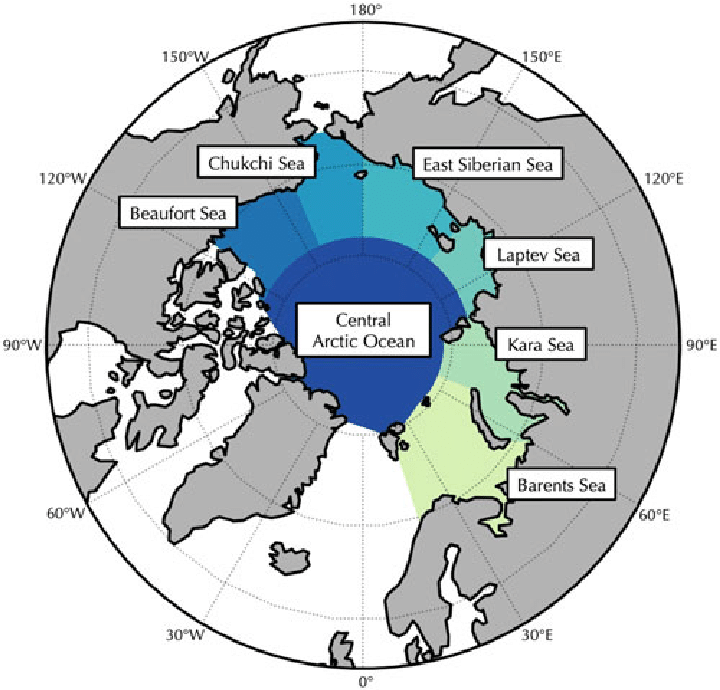The Arctic Ocean is the smallest and shallowest ocean in the world. It is also almost completely landlocked— surrounded by North America, Europe, and northern Asia.
Th e Arctic Ocean is full of ice, and in winter, nearly the entire ocean is frozen. Because it is so hard for ships to get through the ice, even in summer, the Arctic Ocean is the least studied of all of the oceans.
Sea ice is what makes up the polar ice caps. Parts of the ice cap freeze and melt with the seasons, and parts of the ice cap are so thick that they stay frozen year-round. Scientists are concerned because the polar ice caps in the Arctic are getting smaller each year—ice is melting faster than new ice can be formed. Why is this a problem?
First, the polar ice caps in the Arctic and Antarctica contain almost all the freshwater on the planet. If that ice melts and disappears into the ocean, most of the world’s freshwater supply will disappear. Also, if the ice caps melt, the ocean water level could rise as much as 246 feet (75 meters). Th at would change the face of the planet, and low-lying areas would be completely covered by the ocean. For example, many island nations are only a few feet about sea level. If the oceans were to rise even 10 feet (3 meters) higher than they are today, countries such as Tuvalu, the Maldive Islands, and Kiribati would disappear.
Finally, and maybe most importantly, the ice caps act like giant mirrors. They reflect a lot of the sun’s heat back into space, keeping the planet cool. As the ice caps get smaller, they can’t reflect as much of the sun’s energy, so the planet can’t stay as cool. If the planet can’t stay cool, that makes the ice caps melt faster—so it’s a dangerous cycle.
The Arctic Ocean is Earth’s northernmost body of water. It encircles the Arctic, and flows beneath it. Most of the Arctic Ocean is covered by ice throughout the year—although that is starting to change as temperatures climb. Pale and stark on the surface, the Arctic Ocean is home to a stunning array of life.
Ancient Greeks named these waters after the Arktos constellation found in extreme northern skies, a cluster of stars now known as Ursa Major or Great Bear. The average depth is 3,407 ft (1,038 m) and its deepest point north of Svalbard, Norway, is 17,881 ft (5,450 m).
Sea ice has a bright surface; 80 percent of the sunlight that strikes it is reflected back into space. As sea ice melts in the summer, it exposes the dark ocean surface. Instead of reflecting 80 percent of the sunlight, the ocean absorbs 90 percent of the sunlight.
What country is the Arctic in? The Arctic region covers parts of eight countries: Canada, Greenland, Iceland, Norway, Sweden, Finland, Russia, and the United States.

